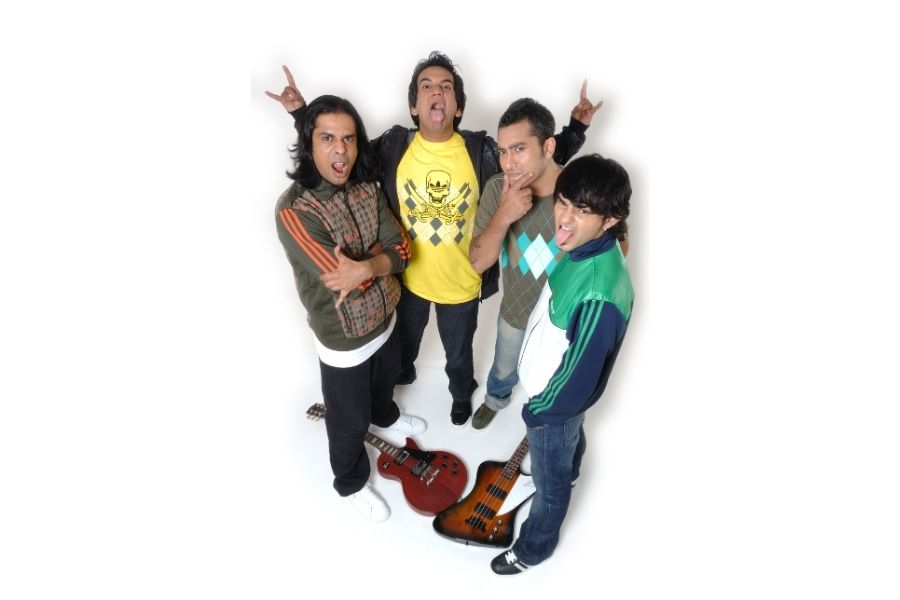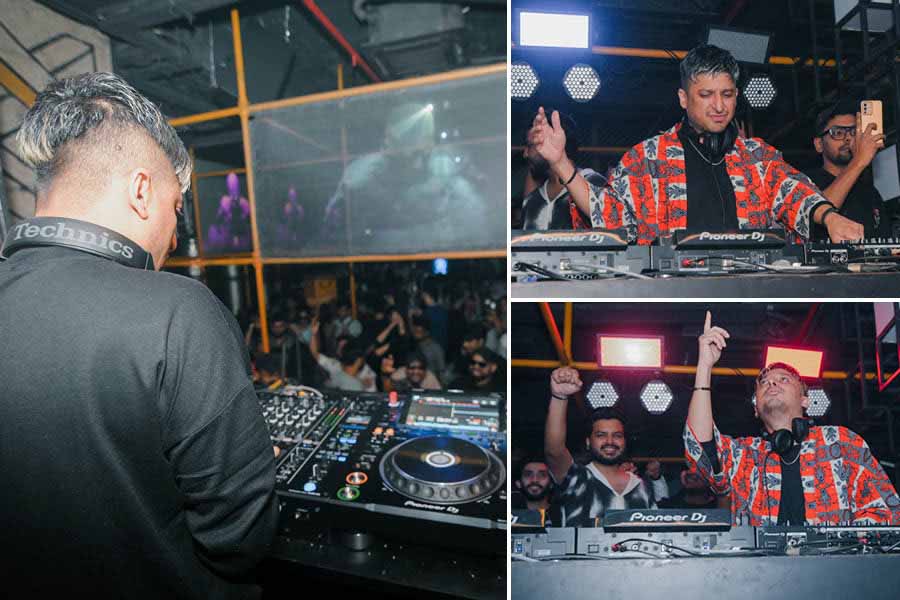For over two decades, Ash Roy has been a trailblazer in the global techno scene, known for his hypnotic fusion of minimal, techno and psychedelic elements. A key figure in both Germany and India’s underground circuits, he has mesmerised audiences across Europe, Australia, the USA, and Asia with his distinctive hybrid sets.
What began with private gigs at friends’ places and a residency at Anticlock (remember the nightlife hotspot at HHI Kolkata?) has since evolved into massive performances on stages such as Awakenings Festival, Fusion Festival, Antaris Project (Germany), Rave the Planet Parade (Berlin), Evolution Festival (Germany), and more.
Beyond his performances, Ash is also the driving force behind Soupherb Records, India’s minimal techno label co-founded by him and Calm Chor aka Ashvin Mani Sharma. Now, as Soupherb celebrates 12 years of groundbreaking releases, Ash marks the occasion with two special compilations and a series of releases, offering a sonic journey that reflects the label’s evolution and its relentless push towards the future of underground electronic music.
To discuss the success of his label and his career journey, the Kolkata-born artiste speaks to My Kolkata.
My Kolkata: Soupherb Records recently celebrated 12 years and 200+ releases. What was your vision when you founded the label, and has it changed over time?
Ash Roy: Our vision was to create a platform for forward-thinking artistes and producers. If you listen to our releases, you’ll find that every track is unique, and each artiste has their own distinct style. Our vision remains the same — only the music has evolved.
Your career spans over two decades. How do you feel your sound has evolved since your early days with former electronic outfit Jalebee Cartel?
With Jalebee Cartel, we focussed on two styles of production. Since we performed as a live act as well as DJ sets, I created music that could be played live, incorporating vocals and instruments. At the same time, I also produced techno, which was more dancefloor-driven and suited my DJ sets. Now, my sound has completely evolved — it leans more towards the minimal spectrum with hints of psychedelia. This is also the style we release on Soupherb Records.

Jalebee Cartel lasted from 2004 to 2014 with members (L-R) Ashvin Mani Sharma (synths and FX), G-force Arjun (bass guitar), Ash Roy (vocals and percussions) and Arjun Vagale (groove and mixing)
The 200+ Part 1 compilation features 12 artistes who have shaped Soupherb’s sound. What was the curation process like, and how did you select the artistes for this milestone release?
We worked closely with Folic State, who helped compile both compilations. Part 1 primarily focused on Indian artistes, with only two international acts — Breger and Hans Dunkelkammer — who have been part of the label since its inception. The curation process involved selecting tracks from artistes, who are active in the scene and have been pushing this genre for a while, alongside some brand-new talents.
The 200+ Part 2 compilation spotlights women artistes in techno. What inspired this concept, and how do you see gender representation evolving in electronic music?
Part 2 highlights influential women artistes who have played a key role in shaping and advancing this genre. As electronic music continues to evolve, many talented women have been instrumental in defining its sound. We felt there was no better way to celebrate their contributions than by showcasing their music.
Your latest EP Gentle Mental with Folic State delves into deep, hypnotic minimal techno. Can you tell us about the creative process behind it?
Yes, this EP was an experiment — we wanted to step outside our usual style and blend our different influences. It’s also slightly faster than what we typically produce. One of us would start the track and then send the project to the other so we could add our elements. Since Folic State is based in Mumbai and I live in Berlin, we couldn’t work on it together in the same studio.
Regarding your personal project, you’ve performed across Europe, Australia, the USA, and Asia. How does the underground techno scene vary across these regions?
Post COVID-19, the rise of harder, faster techno was largely driven by social media, leading most places to follow trends. There was a time when melodic techno was on the rise in India and Europe. While some regions, like Australia with Bush Techno, maintain distinct sounds, the scene has become increasingly homogenised. Only a few labels are resisting trends and pushing alternative styles of techno.
What were some of the biggest challenges you faced while building a career in techno, especially coming from India?
One of the biggest challenges has been that my style of techno doesn’t follow mainstream trends. My music caters to a niche audience, which makes gaining recognition more difficult. However, once people hear me perform, their perception shifts. While my unique style presents challenges, the landscape is evolving, and things are gradually changing for the better.
With techno always evolving, where do you see it in five years, and how will you stay ahead?
All genres of music are constantly evolving. While no one can predict exactly where it’s headed, I see nothing but positive changes ahead. The key to staying ahead of the curve is remaining true to yourself and creating music that’s authentic and unique. I don’t strive to fit in — I aim to stand out.


